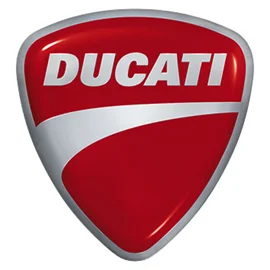Ducati - the nobles, beautiful and fast from Bologna

Let's be honest: What do you associate with the name Ducati? Motorcycles, mostly red, of course. The desmodromic valve control too, and of course the legendary V2 engine. That's all right, but as with so many companies, some of these things didn't start until later than expected.
Start as a radio builder
Then let's start: Antonio Ducati and his three sons Bruno, Adriano and Marcello did not build motorcycles in the first 20 years, and in 1926 they made components for radios. Even in 1946, when two-wheelers were first used, there was no sign of the modern-day surface-to-surface missiles. The "Cucciolo" was an auxiliary motor for bicycles. At that time, however, the founders were no longer on board – Ducati was under state administration.
But the state clearly saw it as promising if Ducati were to expand and strengthen this business. In 1953, Ducati was split into The Ducati Elettronica S.p.A. and the motorcycle manufacturer Ducati Meccanica S.p.A. to illustrate this organizationally.
The following year was very important: Fabio Taglioni took up his post as Technical Director, a position he was to hold until 1989. He proved to be as influential for Ducati as the legendary Giotto Bizzarini was for Ferrari and Lamborghini. Taglioni's decision was both to get the V2 engine up and running and, more importantly and earlier, to use the desmodromic valve control. His first act was a bang. Taglioni solved the task of constructing a sports motorcycle with the slightest means in record time with the only 100 cc Gran Sport "Marianna".
 Photos: Ducati
Photos: Ducati

For the first time with Desmo
In the racing version of the Gran Sport, desmodromics were used. What is that? A short excursion into technology: Valves are opened by the camshaft and closed again by springs. In early sports and racing engines, weak materials often caused valve flutters or spring breaks. The solution: With the desmodromic valve control, these are forcibly and precisely closed. This requires two tilt levers for each valve and an additional camon on the camshaft per valve.
In other words, these engines could be turned like crazy for the time, but with greatly increased production costs. Fabio Taglioni succeeded in making this technique reliable and affordable. Nevertheless, the use of desmodromics is still quite expensive today. In the Ducati racing motorcycles ("Desmosedici") only seven hours are spent adjusting the valves. And even today, Ducati's production motorcycles can be expected to incur increased maintenance costs.
Like almost all Italian motorcycle and car manufacturers, Ducati faced bankruptcy several times, was taken over, became a speculative object and fundamentally reoriented. A short excursion into the changing history of owners: In 1983, Ducati had to team up with the Italian two-wheeler manufacturer Cagiva, which bought Ducati completely in 1985.

Long live the sport
Cagiva struggled with its own payment problems 11 years later and sold only 51% of its Ducati shares to the American Texas Pacific Group in 1996, and in 1998 it sold everything. In 2005, the Italian Investindustrial Company acquired the shares of Texas Pacific Group and sold it to Audi (through its second Italian subsidiary, Lamborghini) in 2012.
Ducati built a number of eye-catching machines in its history. The DNA of the company has always been a sporty to extremely sporty positioning of the machines. The Ducati 851 is representative of many more. Before this model, a motorcycle with these performances as A V2 was unimaginable. Consequently, Ducati subsequently declassified the Superbike racing class with her.
Expanding the customer base
The legendary 1994 Ducati 916 belongs to the same category, which is now considered a design classic in addition to its incredible driving performance (for the time). Around this time, the Ducati makers realized that focusing on super athletes would lead to a dead end. The model range was forcibly expanded, for example in 1993 to include the still built, style-forming monster series. Today, the Ducati model range includes superbikes (Paningale), sport tourers (SuperSport), also travel enduros (Multistrada) and besides the established monsters also a chopper (Diavel).
As of 1 January 2016, 74,741 Ducati motorcycles were registered in Germany, representing a share of 1.8 percent. In 2016, production amounted to around 55,000 units per year, resulting in sales of 731 million euros.
Data
- Orientation: Sport
- Founded: 1926
- Legendary Model: 916
Ducati Offroad Experience: where the adventure begins.
News
Production of the Desmo 450 MX starts
News
Become part of the Multistrada V4 Voyagers 2025
News
Ducati XDiavel V4 in review
Review
Ducati Multistrada V2 2025 review
Review
New Ducati Scrambler models 2025
Blog
Experience the Ducati Multistrada V2 S
News
Ducati Multistrada V4 Rally 60.000 km European Tour
News
New Ducati XDiavel V4 unveiled
News
Ducati Multistrada V2S Model 2025
Blog